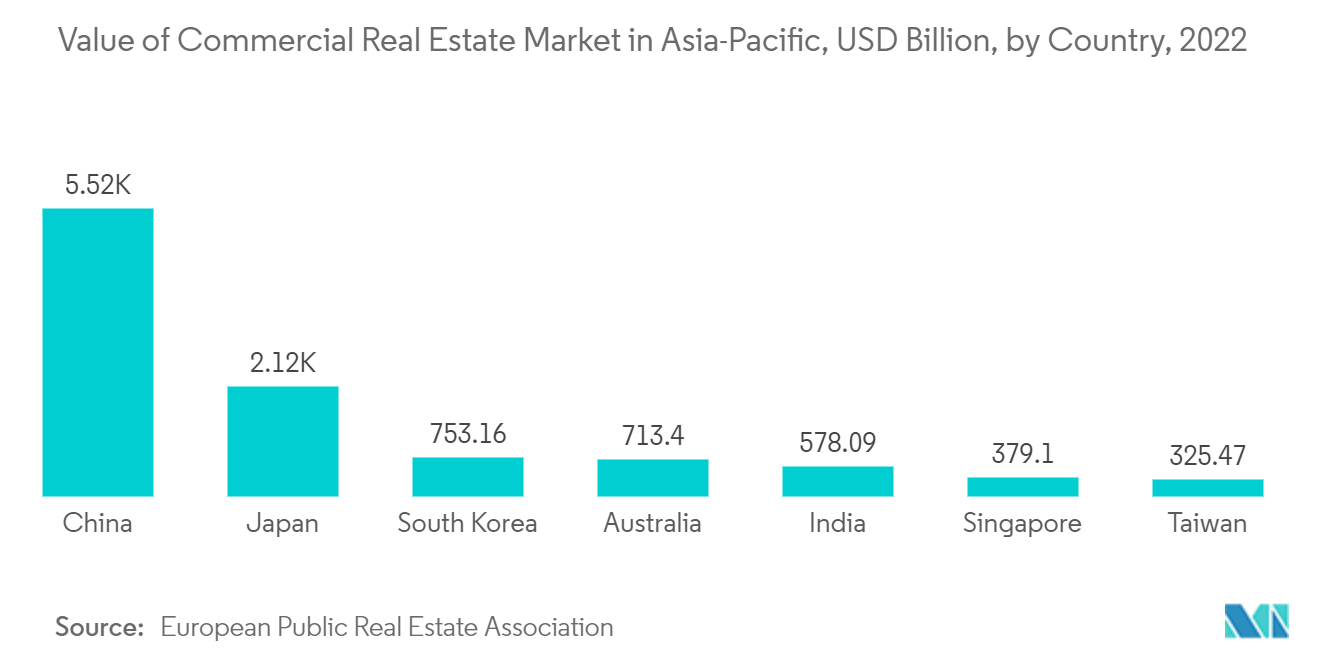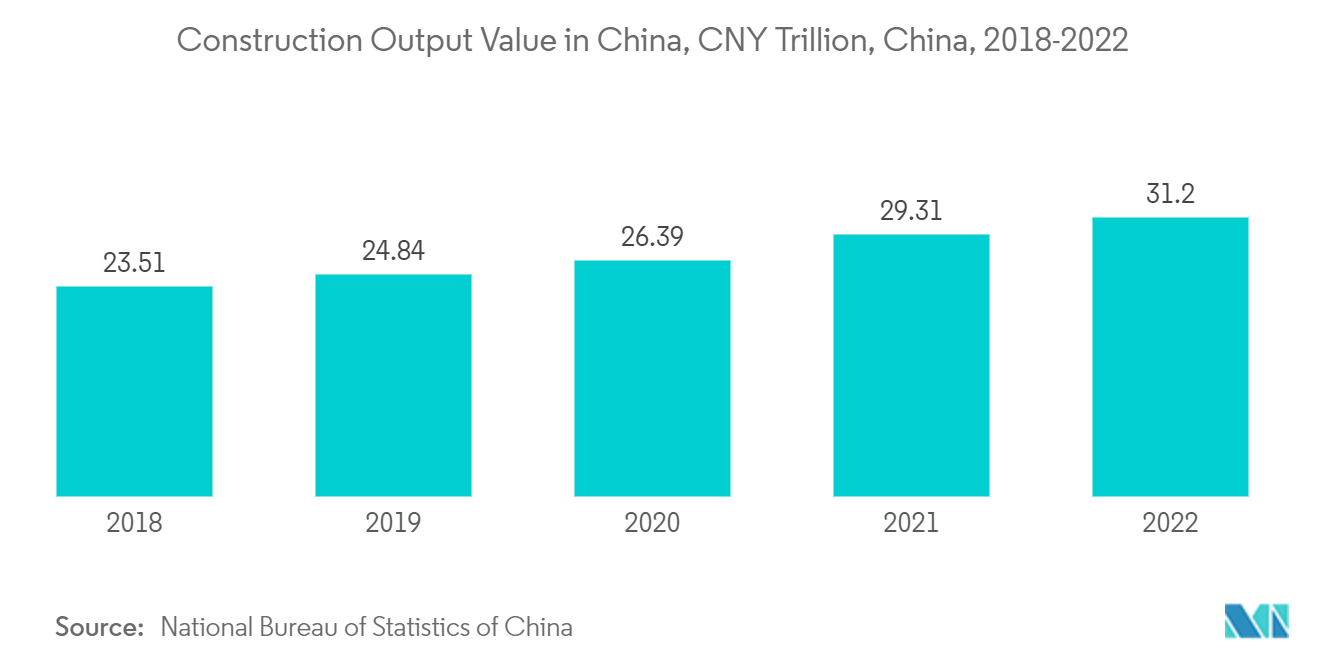Market Trends of Asia-Pacific Cross-Laminated Timber Industry
Non-Residential Application Segment to Dominate the Market
- In commercial buildings such as hotels, offices, and restaurants, cross-laminated timber is used in various parts, including beams, support structures, furniture, floors., walls, ceilings, and other such areas, giving the rooms an aesthetic appearance.
- Cross-laminated timber (CLT) has emerged as an innovative alternative material to steel/concrete in building construction, given its relatively low carbon footprint, not to mention its high strength-to-weight ratio, simple installation, and aesthetic features.
- Cross-laminated timber has recently been used in various institutions in the Asia-Pacific. For instance, in Australia, the University of Newcastle’s new building was set to be made using cross-laminated timber in September this year. The project cost around AUD 58 million (~ USD 37.25 million) and would be the first mass timber building constructed on the NSW Central Coast.
- This year, Singapore made an investment in the construction of Asia’s most prominent mass timber building: the Gaia building for the Nanyang Business School at Nanyang Technological University (NTU). This project has been led by Toyo Ito & Associates, and is the second building on the NTU campus to use mass timber, following NTU’s ‘The Wave’ sports hall.
- The Mactan International Airport in the Philippines is Asia's first airport with a roof structure composed entirely of glulam. Glulam (Glued Laminated Wood) is a structural material produced from the union of individual wood segments. This wood has high durability and humidity resistance, making it easy to make big pieces and unique shapes when binding with industrial adhesives commonly known as melamine or polyurethane resin.
- Therefore, with such a rise in the construction of commercial buildings, the demand for walls, roofs, floors, and ceilings has also increased substantially, thus creating a significant market for cross-laminated timber in the Asia-Pacific countries.

China to Dominate the Market
- China operates as the world's largest importer of timber. As China’s economy continues to develop rapidly, the timber sector is also in a state of transformation and modernization. Furthermore, as per the Chinese Timber and Wood Products Association, China is the world's biggest consumer of timber and timber products, with an annual consumption of 570 million m3 of timber, including 310 million m3 of imported timber (RWE).
- In 2022, China launched several initiatives to revive stalled property developments and help developers recover from a funding shortage. Still, at year-end, a new survey showed that only 21% of the country’s stalled projects had completely resumed construction.
- The Chinese government is focusing on boosting investments across the construction sector in the country to boost overall economic growth. For instance, recent moves to increase financing for infrastructure construction include a USD 120 billion increase in the lending ratio of policy banks. The government is also considering allowing local governments to spend up to about USD 220 billion of the special bond quota through which local governments fund infrastructure construction.
- The value-added of the construction industry is expected to grow by 6% in 2023, reaching CNY 8.75 trillion (USD 1.2 Trillion). The growth of commercial property construction is expected to increase, with infrastructure projects starting, while residential property construction is projected to show little growth in 2023.
- In August 2023, the construction of 3 schools and one hospital project entered a new phase. Beijing is aiding the new area by building three schools and one hospital.
- These policies are expected to drive the nation’s construction industry over the forecast period. This will likely spur the demand for the market studied in the construction industry. The government is also looking forward to boosting activities in the construction sector, more specifically in the infrastructure sector, after the recovery from COVID-19 to bounce back from the country’s economic impact.
- Thus, the aforementioned factors are expected to impact the market’s demand studied in the country during the forecast period.


